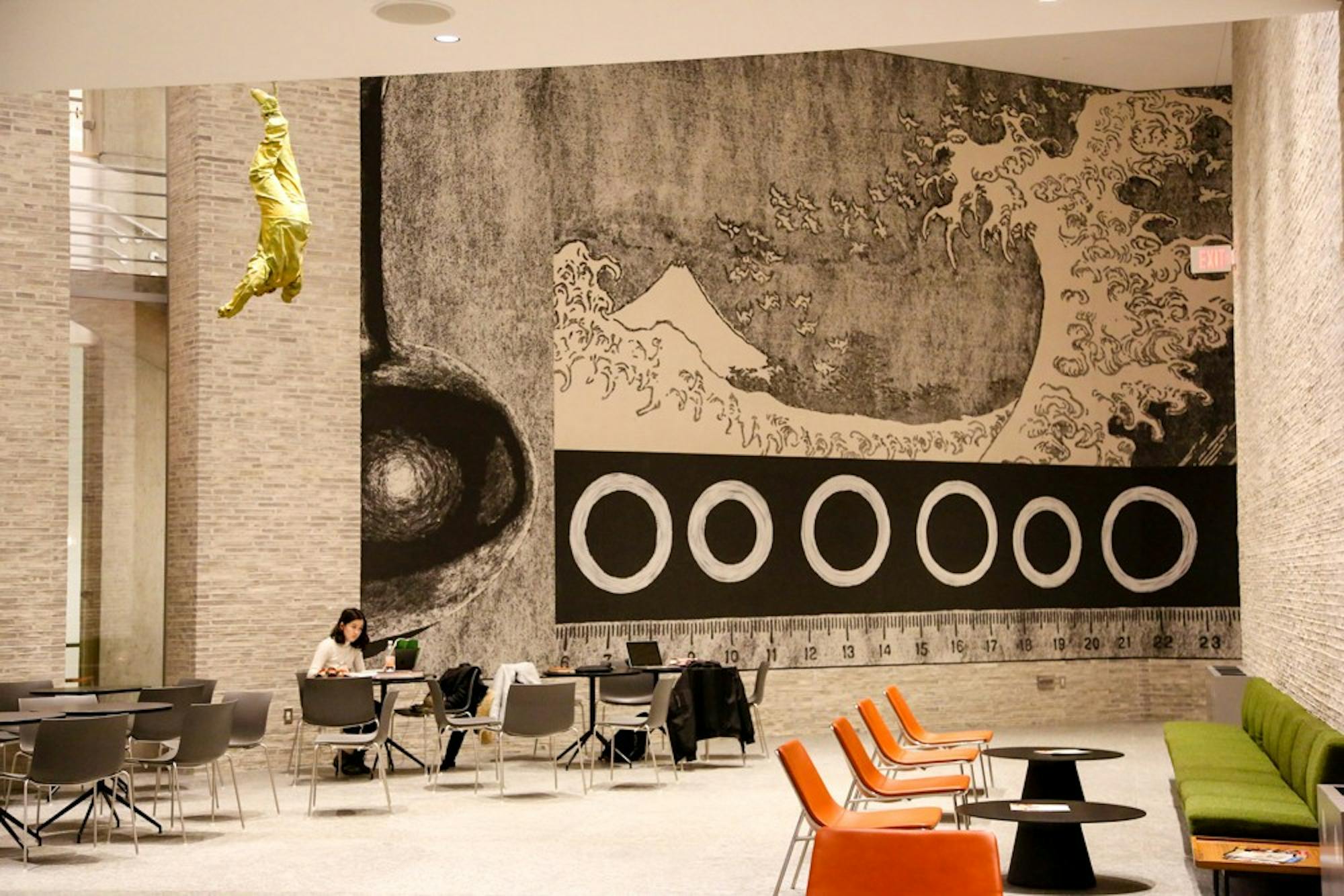This article is featured in the 2019 Homecoming special issue.
When the Hood Museum of Art officially reopened its doors on Jan. 26, hundreds of visitors crammed into its doors to see the culmination of three years worth of renovation. Intended to bolster its collections and grow its influence on campus, these upgrades have supported the Hood as a campus hub for the visual arts. The Hood has also assumed a more significant role as a source of learning within and beyond the classroom.
According to Hood Museum director John Stomberg, the new museum has had 30 percent more visitors over the last six months than it previously had in an entire year.
One of the primary objectives of the Hood recently has been the promotion of classroom visits and educational opportunities.
“There is this sense of us foregrounding the education mission of this college,” said Hood curator of academic programming Katherine Hart. “That’s a very important part of what we do.”
Thanks to outreach efforts from the museum, some 168 classes, ranging in subjects from engineering to writing, have been able to partake in activities created by the museum. Hart said that the museum looks for a wide variety of classes in different subject areas so that all students can have these types of experiences, especially in the sciences.
Typically, professors will reach out to the museum to organize these experiences. According to Hart, the museum works closely with professors to tailor the visit to their curricula, and then subsequently produces a set of curated objects to evoke key themes and raise questions.
According to anthropology professor Maron Greenleaf, she took her GEOG 68, “Environmental Justice” class to the Hood to take in-class concepts about inequality and the environment and apply them in different settings. Through a series of “disorienting landscapes,” her students identified where they were making assumptions about locations, challenging them to think from a different perspective about how environmental injustice can shape communities.
Geography professor Justin Mankin had similar goals when he took his students in GEOG 37, “A Climate for Human Security,” to the Hood.
“The idea there was to take a look at how these images can confound or confirm our expectations about what global warming looks like,” Mankin said. “What I wanted to do was to pull out a couple of different themes that linked directly to class material about how climate change is this global abstract phenomena, but also how its impacts on the people can be visualized.”
These academic experiences have been largely successful in promoting new ways of thinking. According to Mankin, his students unanimously found the experience to be worth their time.
“People really enjoyed that opportunity to reflect on this intersection between science and art and the challenges and opportunities therein,” he said.
Students have also spoken highly about their experiences with the Hood both inside and outside of the classroom. According to Anupam Sharma ’22, his trip to the Hood through his Writing 5 class was “fantastic” in that it changed his perception of art and museums. His class studied how and why certain objects are displayed the way they are.
“When I was writing my papers, I had a concrete experience I could draw on to supplement my argument,” Sharma said.
Beyond the classroom, the Hood is also engaging with the College through co-curricular opportunities. One of these examples is through the development of the paid Senior Internship program with the museum, where seniors are offered the ability to work hands on with museum curators and staff to develop new exhibits and promote them throughout the college. Recent student-developed shows include “The Politics of Pink,” about the problems of gender norms and “Creating Knowledge and Control,” about the power of big data.
Another significant non-curricular effort of the Museum is the “Museum Collecting 101” course, offered in the winter and spring terms. According to Isadora Italia, the Hood’s campus engagement coordinator, students in this course meet weekly to learn about the collections and acquisition process. At the end of the course, the students vote on a work of art for the museum to acquire, which then becomes a part of the museum’s permanent collections.
The Hood is also making efforts to engage the Dartmouth community through social events run by the student-led Museum Club. According to Italia, members of all student classes can participate in this club to help organize guest lectures and events at the Museum, allowing students to participate with the Hood as soon as they step foot on campus. One such event is the “Hood After 5” party hosted by the museum once a term. According to Italia, this event mixes food, music and art activities.
“It’s really a way to open up the Museum and make it a social space for all the students on campus,” she said.
According to Hart, the museum is looking to expand upon its permanent collections and introduce more special collections. Hart noted that the museum is currently developing projects about the intersection of art and poetry and another on Native American contemporary ceramics.
When it comes to outreach, Italia notes that the museum is always looking for student needs and feedback and more avenues of collaboration with student groups on campus.


